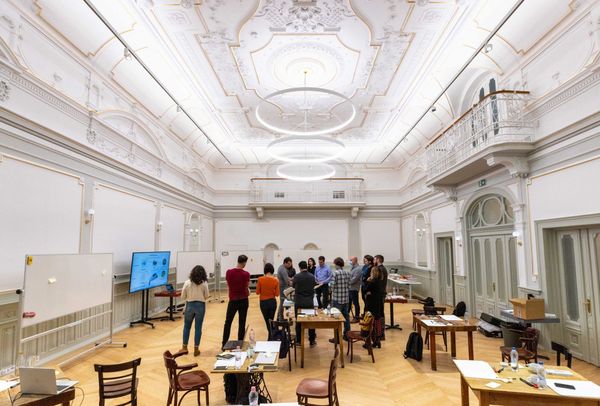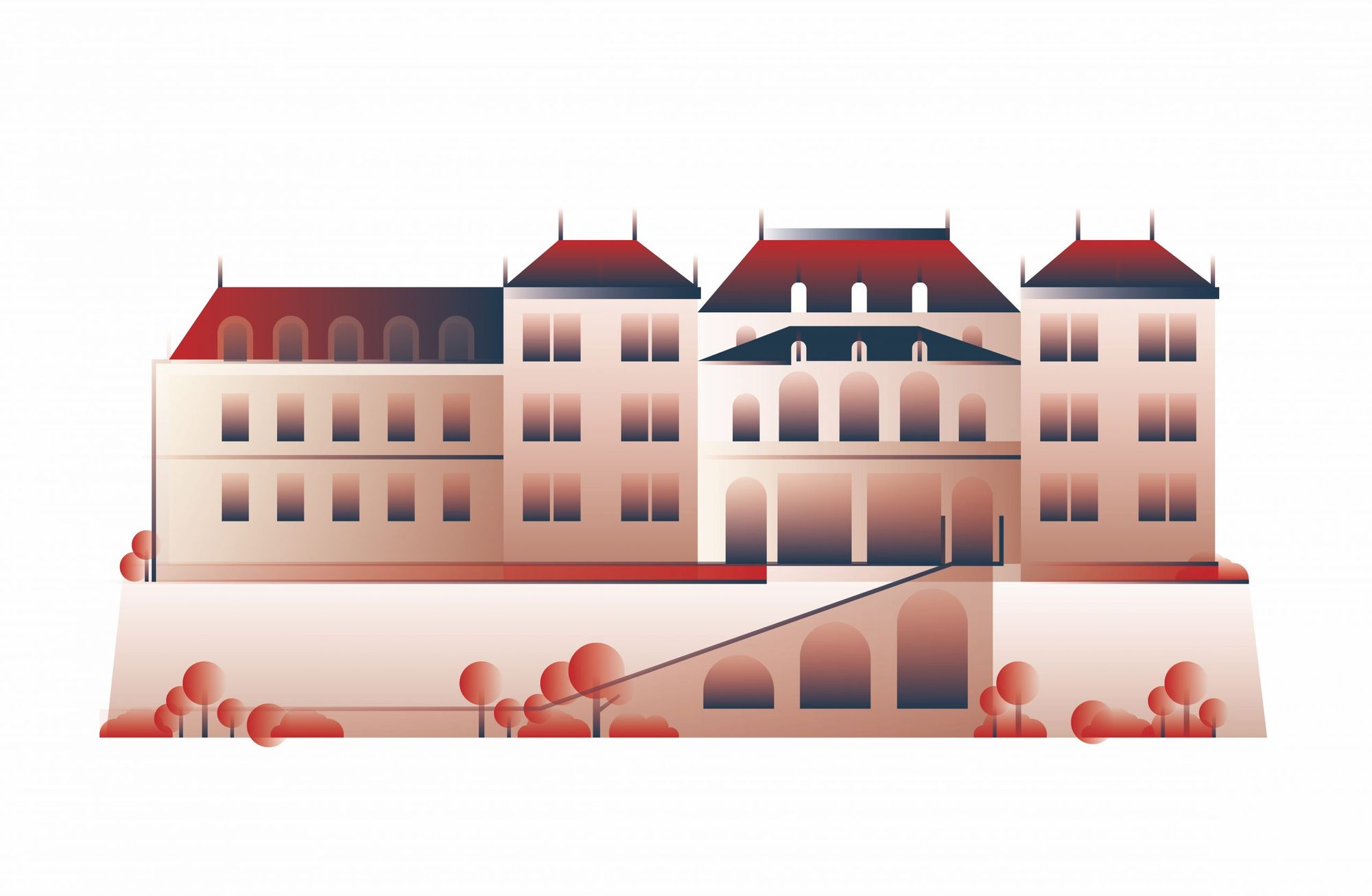Growth in the CEE region created a demand for new infrastructures that were unimaginable during the second half of the 20th century. Naturally, this demand is the result of not only the liberation from Communist regimes but also the altered global economic scene. By the turn of the Millenium, a new age of global commerce arrived, providing prominent opportunities for the countries of the CEE region.We rounded up the most ambitious projects from the ones that are only waiting for their last finishing touches to those that will probably never become a reality.
This article was published in print in Hype&Hyper 2021/2.
Illustrations by László Bárdos
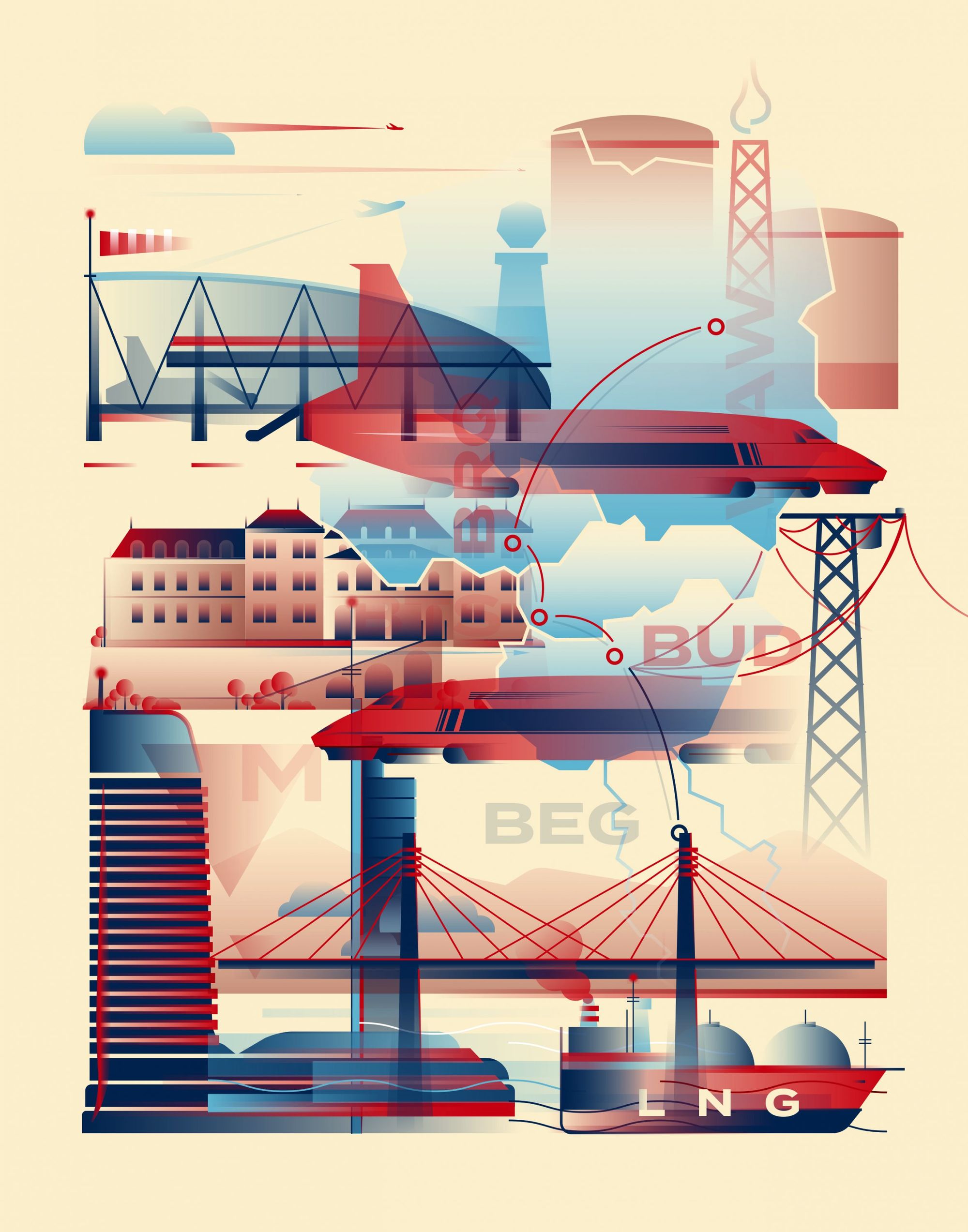
Most of the projects show that the region is racing to get ready for its new role as a commercial, energy, and business hub between Europe and Asia. These projects—just like every infrastructure project—are the topic of countless professional debates and are under constant political attacks, however, these details are readily available in different media outlets according to your own political taste. Therefore, I’d rather outline the general trends of the region’s development: the importance of advancing west-to-east trade and mobility in the next decade, as well as the progress of symbolic projects.
KRK LNG Terminal / Croatia
This January, the only liquefied natural gas terminal in the Balkan peninsula and the CEE region—other than the Baltic sea—was officially inaugurated. This is a huge deal. During the last decades, Central Europe has been in a vulnerable position in terms of energy supply that was impossible to improve even with gasometers or better international relations since the source was only to be found on one end of the pipeline network: in Russia. The energy market’s diversification is one of the most important tools to guarantee the region’s security and independence, thus this inauguration is a symbol of us getting a bit of our freedom back. Even though the KRK LNG Terminal’s capacity doesn’t change the status quo, this development is a great example of the region’s aspirations in terms of energy strategy.

Pelješac Bridge / Croatia
Pelješac Bridge in Croatia is of historic proportions in more than one sense: the 2404-meter-long multi-span cable-stayed bridge is the biggest of its kind in Croatia, and it also marks the first time a Chinese firm won a tender announced by the European Commission. Everyone expects different outcomes from the completion of the bridge: Croatia and the European Union would like it to boost the declining demographic trend in the region, while China views the bridge as a useful part of its Belt and Road Initiative and as an example of them realizing significant projects cheaper, quicker and in better quality anywhere in the world than their western counterparts. The latter is for the future to tell.
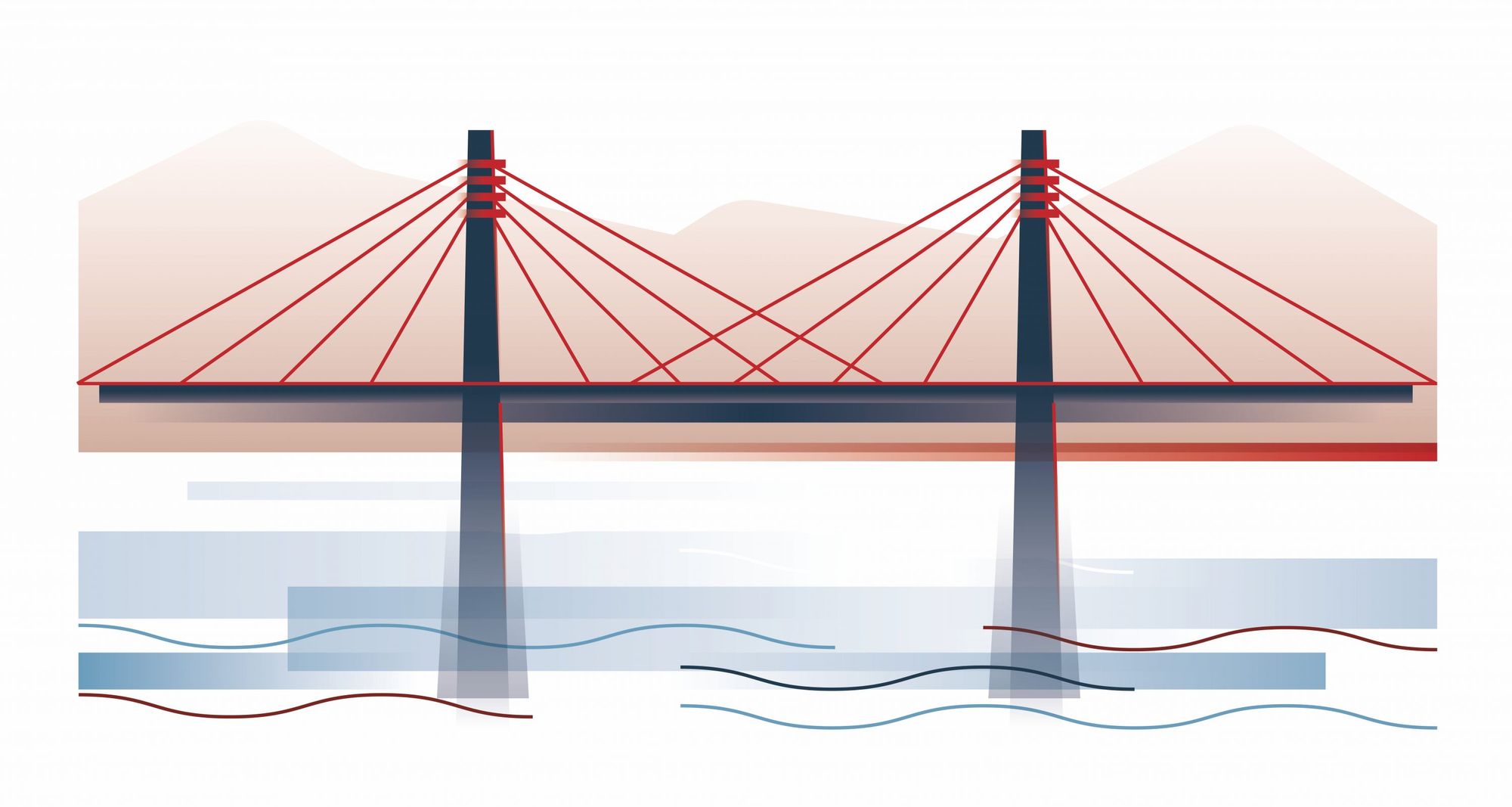
Budapest – Belgrade railway / Hungary – Serbia
Even though China COSCO Shipping is an owner in many of the important ports in Western Europe, in a strategic sense, buying the Port of Piraeus—Europe’s sixth largest terminal—was the most significant achievement in developing better trade routes between China and the European Union. Now the next question is: how will the goods reach Central and Western Europe from the West Balkan port? Understandably, Hungary and Serbia are eager to provide an answer together by constructing a new, upgraded 336 km-long railway line connecting Budapest and Belgrade.
Eastern tower blocks / Hungary – Poland
The two symbolic investments resulting in the tallest tower blocks in both Warsaw and Budapest are not necessarily parts of the infrastructure, but still, “the tallest building” in any city has symbolic significance. Budapest and Warsaw hold an entirely different stance when it comes to the legislation on tower blocks (covered extensively in Hype & Hyper’s previous issue). The two skyscrapers, both designed by Foster + Partners, will considerably alter the capitals’ skylines and will rise as symbols of their development.
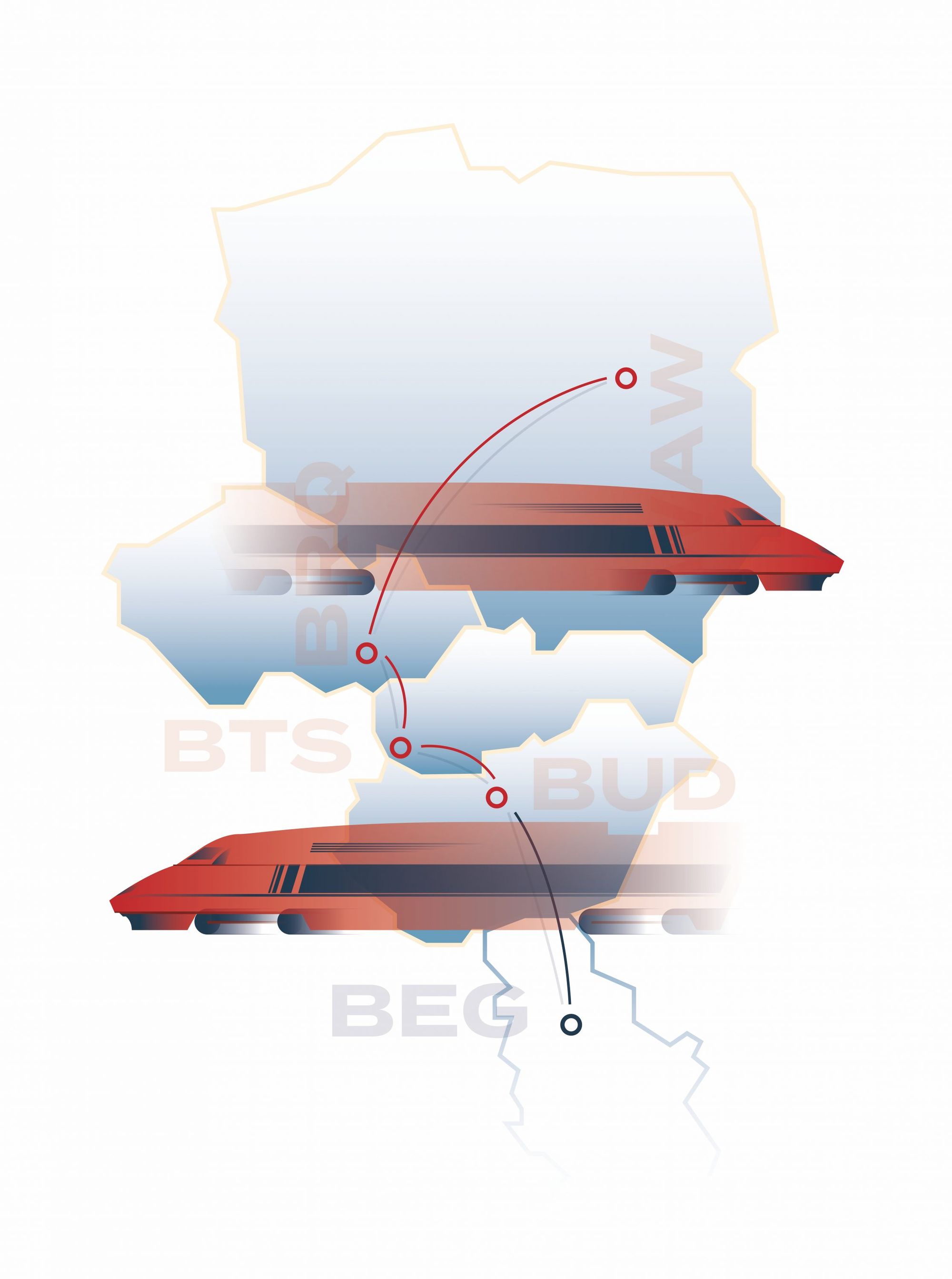
Visegrád express railway / Visegrád Group countries
Although the project is still at an early, pre-preparation stage, a ministerial declaration of intent shows that the four participating states are determined to build the railway connecting their capitals (Budapest, Bratislava, Prague, and Warsaw). Besides its obvious benefits, the express railway is also a prestigious investment. In the countries of the former Eastern Bloc, the infrastructure for mass transit is less developed compared to the West, and therefore this project would mean a huge step ahead for the region.
National Hauszmann Program and the Saxon Palace / Hungary – Poland
The equivalent of Poland’s Saxon Palace is the Hungarian National Hauszmann Program with the difference of the latter project already underway. Reconstructing cities’ squares and buildings after wars that devastated their constructed environment should not lead to assumptions that the agenda of current decision-makers is to resurrect the political systems associated with them. After the war, Buda Castle wasn’t reconstructed due to political reasons as the communist regime found it unnecessary to repair buildings representing previous times and even actively contributed to their demise. The National Hauszmann Program launched in 2014 has since produced concrete results and the process is truly captivating. The reconstruction of the Saxon Palace in Warsaw, on the other hand, is still unable to become reality and is constantly surrounded by heated debate. Under Nazi occupation, Warsaw’s buildings were strategically demolished and the Saxon Palace was no exception, making it a sensitive subject in Polish discourse for various reasons.
Via Carpathia / Klaipéda – Thessaloniki
The Via Carpathia transnational highway network connecting Klaipéda on the coast of the Baltic Sea with Thessaloniki by the Aegean Sea could create a similar opportunity as railways for the development of north-to-south trade in the region. A fork of the highway network might run to the Black Sea port town of Constanta and is planned to provide a way for the entire Balkan peninsula, Central Europe, and the Baltics to reach the Eastern-Mediterranian’s most important port city of Thessaloniki situated at its southern terminus.
Warsaw – Solidarity Transport Hub / Poland
The Central Communication/Solidarity Transport Hub is planned to be constructed 40 kilometers southwest of Warsaw to replace Chopin Airport. The developer has an ambitious plan in mind for the hub to serve 100 million passengers yearly and provide a way to reach Warsaw in 15 minutes, and other larger Polish cities such as Krakow, Wrocław, Poznań, and Gdańsk in no more than two hours.

Electricity networks across Eastern Europe / Ukraine – Moldova
The former socialist members of the European Union have already joined the European Network of Transmission System Operators for Electricity (ENTSO-E), and the next big step for the region’s comprehensive economic reform is for Ukraine and Moldova to join as well. The significance of the project is enormous. It could provide better living conditions for 50 million citizens and a more predictable economy for both two countries, taking them one step closer to putting an end to the Cold War period.
The Danube-Morava-Vardar-Aegean Canal / Hungary and the Balkans
A canal running from the Danube to the Aegean Sea? I wouldn’t go as far as considering it a joke, but let’s face it: this is a very unlikely scenario. The last time the idea of turning Bucharest into a seaport city by constructing a canal was by the Genius of the Carpathians, Nicolae Ceaușescu. The Danube-Aegean canal sounds like a more reasonable concept, although in terms of feasibility, it’s still very far from reality. The project’s aim is to provide a river trading route for the landlocked countries of Central Europe and the Balkans to the Aegean sea. However, if we’re dreaming about a north-to-south trade corridor, a railway through the mountains might be a more realistic idea.
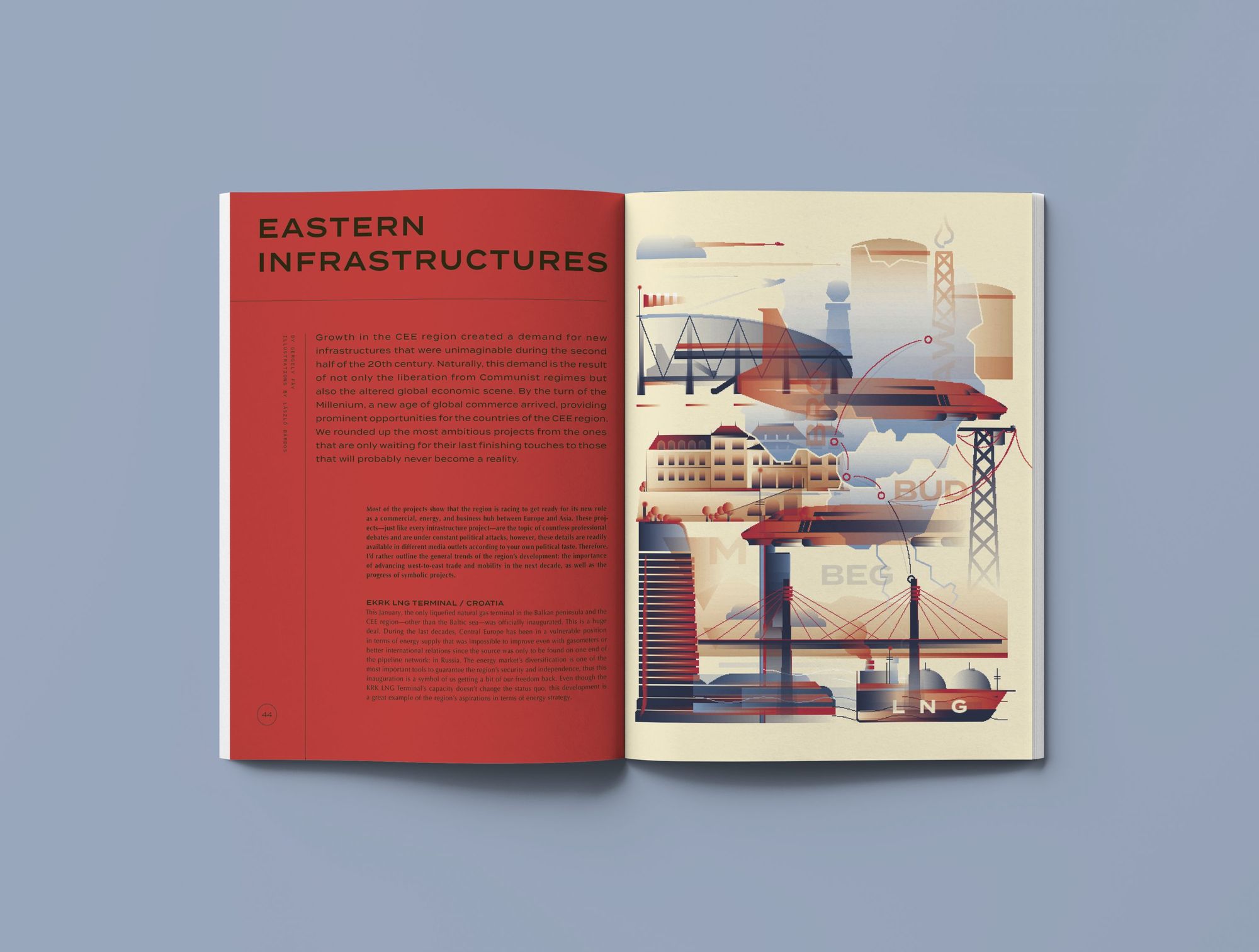
Prefer to read it in print? Order the second issue of Hype&Hyper magazine from our online Store!
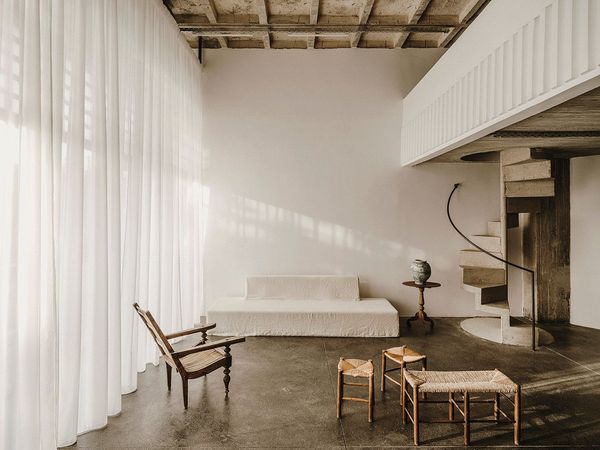
Favorite interiors of the week_92
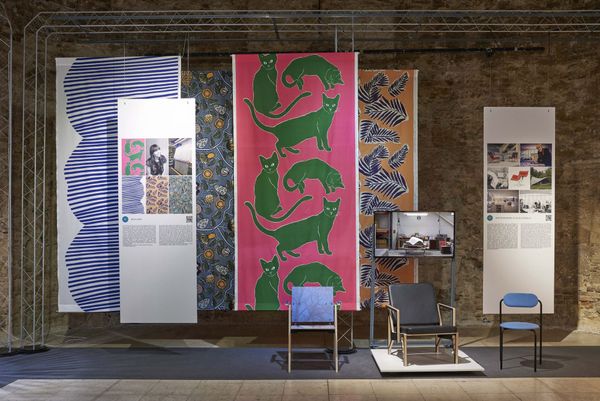
Exhibition of works by textile artists opens in Fuga | VI.TEXHIBITION
